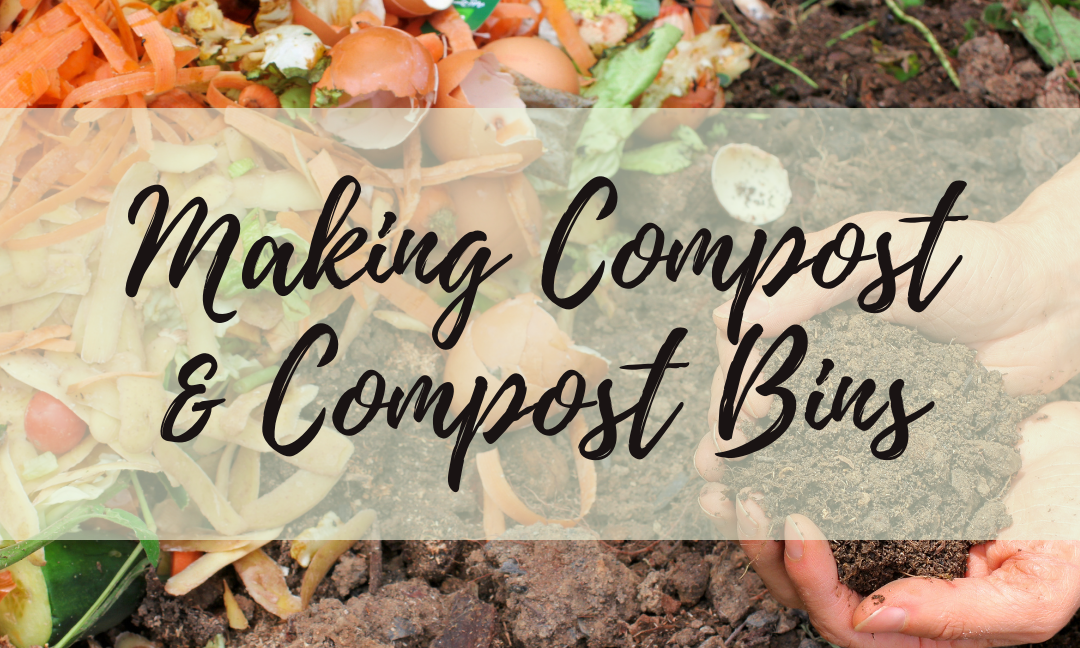Written by: Rohan Prabakaran
There are numerous reasons to compost. You can save money, preserve resources, optimize your soil and reduce your carbon footprint on the environment. Regardless of your situation, composting is a win/win scenario. Including compost in your garden will not only fertilize the soil, it inherently feeds your soil with a diversity of nutrients and microorganisms that will optimize plant growth. Chemical-based fertilizers on the other hand provide a quick burst of skewed nutrients that can wash away harmful chemicals into our rivers and streams. It is important to avoid using these chemical-based fertilizers to preserve our community and environment.
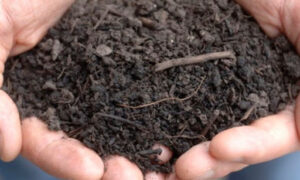
(The Look of Complete Compost)
Compost is decomposed organic material, such as leaves, grass clippings, food waste, scraps. It provides essential nutrients for plant growth and is often used as a natural fertilizer. Compost also improves soil structure so that soil can efficiently hold the correct mixture of moisture, nutrients and air. It enhances the texture of both clay soils and sandy soils, making either type rich, moisture-retentive, and optimal to use.
1. Choose your suitable compost bin.
Compost Bins have the advantage of being organized, keeping animals away and preserving heat (which further helps the process of decomposing). You can purchase compost bins from many gardening and general home stores, or you can build your own compost bin. However, you stave off a lot of extra work by buying it from a store.
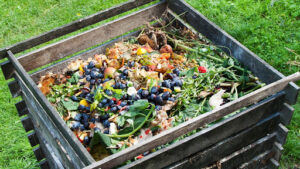
(Homemade compost bin)
2. Choose your composter location.
You should choose a location that is smooth, well-drained and prime for sunlight. Most importantly you should find a convenient location for you to track progress and maintain.
3. Alternate layers.
Major materials that must be included are nitrogen-rich ‘greens’ and carbon-rich ‘browns,’ water, and air. Examples of greens include green leaves, coffee filters, tea bags, plant wastage, fruits and vegetable peels, eggshells and fresh grass clippings. An example of browns is deceased plants, sawdust from untreated (you have to check this twice) lumber, tree twigs, and dried grass, weeds, hay straws and leaves. Water enables microbes in your compost to grow and help decompose the material.
Begin with a layer consisting of twigs & sticks, to allow for drainage. Cover this specific layer with leaves. Then alternate between layers of nitrogen-rich material and carbon-rich material.
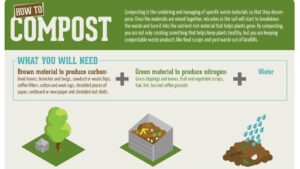
(Material Needed in order to produce compost)
4. Include kitchen and yard waste as they accumulate in your household
Utilize the food wastes, scraps, organic waste you collect in your kitchen. When it is full, empty its contents, but be aware of what you put in the bin.
Some items not to compost are:
Meat, fish and animal fats — These materials may attract scavengers and pests to your compost pile.
Shredded newspapers or office paper — The paper may contain harmful chemicals that can be of detriment to your compost. Recycle them instead.
Ashes from your grill — Wood ashes can be very useful in limited and contained quantities, but BBQ grill ashes should not go into your compost pile.
Dog and cat feces — These materials can add damaging diseases to your compost, and they have an unpleasant odour attached to them.
Sawdust from treated lumber — (As mentioned above, check twice) Sometimes lumber is treated with harmful chemicals, so you have to be aware of how it was produced.
When you include food scraps or yard waste, be sure to top it with a layer of browns in your bin. If you abstain from adding browns, your compost will be wet and break down more slowly.
5. Add Layers Until Your Bin is Full of waste
The bin contents will decompose, and as a result, the volume will decrease as well.
6. Maintain Your Compost Bin
To have optimal efficiency, check your compost bin and make sure it’s progressing and decomposing at a nominal speed.
7. Harvest Your Compost
Finished compost will have an amicable dark, crumbly and smell that resonates with the Earth. You should be able to have complete compost within four to six months of starting your bin.
Remove all the decomposed compost from the bin. You must leave the unfinished materials in the bin to continue decomposing, as it isn’t ready yet. Be sure the decomposition process is complete before you utilize your compost. If you do not, microbes in the compost could take nitrogen from the soil and harm plant growth, which defeats the whole purpose of making compost.
https://www.youtube.com/watch?v=ncVocOipLMc (Harvesting Compost)
With just a limited investment of time, you can contribute to the solution of the community organizing waste disposal problem. At the same time, you enrich the soil and improve the health of your yard and garden.
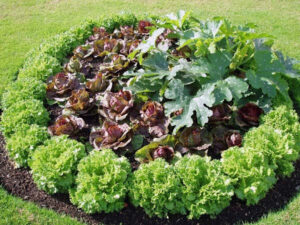
(Healthy Garden)
Citations
7 easy steps to composting. 7 Easy Steps to Composting | City of Leduc. (n.d.). https://www.leduc.ca/composting/7-easy-steps-composting.
Commission, R. R. B., Commission, R. R. B., About the authorRed River Basin Commission’s recent articlesHow to create an inviting butterfly gardenMay 4, Red River Basin Commission’s recent articlesHow to create an inviting butterfly gardenMay 4, Red River Basin Commission’s recent articles, & Articles, M. (2021, March 25). Why is composting important? A few tips to get you started. operator. https://www.manitobacooperator.ca/country-crossroads/the-importance-of-composting/.
MediLexicon International. (n.d.). Composting: Benefits, how-to, and more. Medical News Today. https://www.medicalnewstoday.com/articles/composting-benefits.
Ross, R. (2018, September 12). The science behind composting. LiveScience. https://www.livescience.com/63559-composting.html.
Sidder, A. (2021, May 3). The green, Brown, and beautiful story of compost. Culture. https://www.nationalgeographic.com/culture/article/compost–a-history-in-green-and-brown.
Transportation, S. (2011, June 27). Why should i compost? Green Action Centre. https://greenactioncentre.ca/reduce-your-waste/why-should-i-compost/.

